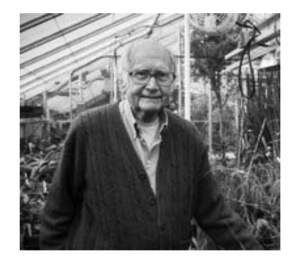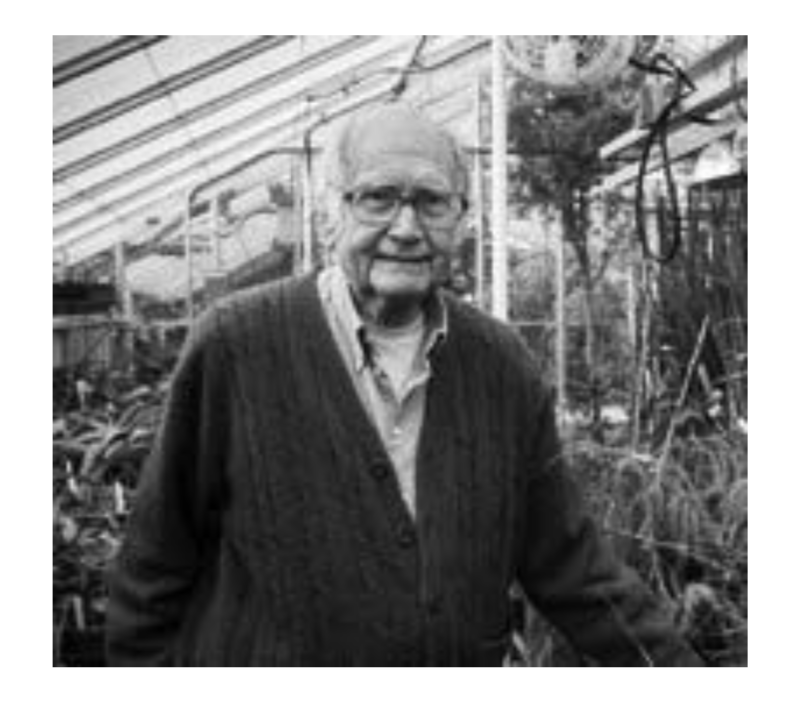(30 December 1935 – 1 July 2022)1
The University of North Carolina at Chapel Hill Herbarium (NCU) curates about 170 specimens collected by Carl John Burk. Most were collected for his doctoral research on the floristics of the Outer Banks of North Carolina. Without doubt more specimens collected by Burk will be found as we continue to catalog our collections. He commonly used “C. J. Burk” on herbarium labels at NCU. Other herbaria curating specimens collected by Burk include Miami University (MU), Louisiana State University (LSU), Highlands Biological Station (HBSH), Georgia Southern University (GAS), Furman University (FUGR), New England Botanical Club (NEBC), Indiana University (IND), Murray State University (MUR), New York Botanical Garden (NY), Old Dominion University (ODU), The Pennsylvania State University (PAC), University of Mississipi (MISS), University of South Carolina (USCH), University of South Florida (USF), University of Southern Mississippi (USMS), Valdosta State University (VSC), Vanderbilt University (VDB), Western Carolina University (WCUH), and William & Mary (WILLI).2
Specimens Burk collected from the Outer Banks area also curated by the National Park Service at the Cape Hatteras National Seashore, but are not yet cataloged in an on-line public format.4
Burk was born in Troy, Ohio on 30 December 1935.1 After receiving an A. B. from Miami University in Ohio in 1957, he earned graduate degrees at the University of North Carolina at Chapel Hill.3 He studied with A. E. Radford for his Masters degree; the title of his 1959 thesis was “A floristic study of a sandhill area on the North Carolina coastal plain”. He continued with Radford as the advisor for his 1961 doctoral thesis, “A floristic study of the Outer Banks of North Carolina.”

“In 1961 Dr. Burk joined the faculty of Smith College [Northampton, Massachusetts, USA], starting an exemplary teaching and research career. His research interests included the botany, biogeography, and ecology of coastal areas and freshwater wetlands, as well as historic studies including botanical gardens and botanical illustration. For decades he taught plant systematics and plant ecology in addition to courses in biogeography and conservation. Dr. Burk served as an Associate Editor of the Journal of the Torrey Botanical Society… He served as a faculty member at Smith College for over 4 decades and retired in 2009 as the Elsie Damon Simonds Professor in the Life Sciences Emeritus… Dr. Burk leaves behind his wife Lale, sons John and Nicholas, daughter-in-law Hai Ly, two grandchildren, and other members of his extended family.”1
Burk, C. J., & Burk, J. S. 2013. Heterotheca subaxillaris var. latifolia (Asteraceae), a Massachusetts record established in a Cape Cod heathland. Rhodora, 115(963), 281–285. http://www.jstor.org/stable/42003395
Burk, C. J. 2007. [Review of A Guide to Native Plants of the New York City Region, by M. B. Gargiullo]. The Journal of the Torrey Botanical Society, 134(4), 571–572. http://www.jstor.org/stable/20063952
Bailo, B. G., Emison, M. R. C., Coleman, W. B., & Burk, C. J. 2004. Thirty-six years of change in an Eastern Hemlock – White Pine stand in western Massachusetts. Rhodora, 106(927), 273–286. http://www.jstor.org/stable/23314756
Burk, C. J., & Zebryk, T. M. 2001. Woody Aristolochia species in western Massachusetts. Rhodora, 103(916), 427–430. http://www.jstor.org/stable/23313422
Holland, M. M., Burk, C. J., & McLain, D. 2000. Long-term vegetation dynamics of the lower strata of a western Massachusetts oxbow swamp forest. Rhodora, 102(910), 154–174. http://www.jstor.org/stable/23314646
Burk, C. J. 1996. [Review of A Revision of Heterotheca sect. Phyllotheca (Nutt.) Harms (Compositae: Astereae): The Prairie and Montane Goldenasters of North America. University of Waterloo Biology Series No. 37, by J. C. Semple]. Rhodora, 98(894), 218–219. http://www.jstor.org/stable/23313250
Burk, C. J., & McMaster, N. D. 1988. The spread of Catalpa ovata G. Don in western Massachusetts and its biogeographic implications. Rhodora, 90(864), 461–464. http://www.jstor.org/stable/23312486
Burk, C. J., & Prabhu, V. 1988. Growth and extension of a naturalized western Massachusetts stand of Catalpa speciosa Warder. Rhodora, 90(864), 457–459. http://www.jstor.org/stable/23312485
Burk, C. John and Marjorie Holland. 1979. Stone walls and sugar maples: an ecology for Northeasterners. Boston, MA: Appalachian Mountain Club.
Burk, C. J. 1977. A Four Year Analysis of Vegetation Following an Oil Spill in a Freshwater Marsh. Journal of Applied Ecology, 14(2), 515–522. https://doi.org/10.2307/2402563
Burk, C. J., & Lauermann, S. D. 1977. Catalpa speciosa naturalized in western Massachusetts. Rhodora, 79(818), 305–307. http://www.jstor.org/stable/23311060
Burk, C. John. 1976. A four year analysis of vegetation following an oil spill in a freshwater marsh. Amherst : Water Resources Research Center, University of Massachusetts.
Burk, C. J., Lauermann, S. D., & Mesrobian, A. L. 1976. The spread of several introduced or recently invading aquatics in western Massachusetts. Rhodora, 78(816), 767–772. http://www.jstor.org/stable/23313620
Lauermann, S. D., & Burk, C. J. 1976. The flora of Penikese Island: The Centennial Collection and its biogeographic implications. Rhodora, 78(816), 707–726. http://www.jstor.org/stable/23313615
Burk, C. J. (1973). The Kaibab Deer Incident: A Long-Persisting Myth. BioScience, 23(2), 113–114. http://www.jstor.org/stable/1296571
Burk, C. J. 1969. Polypodium vulgare var. virginianum on Cape Cod Sands. American Fern Journal, 59(4), 168–169. https://doi.org/10.2307/1546165
Burk, C. J. 1966. Marsilea quadrifolia L. in Western Massachusetts. American Fern Journal, 56(3), 140–141. https://doi.org/10.2307/1547122
Burk, C. J., & Nah, C.-H. 1966. Environmental control of a taxonomic character separating Heterotheca s. str. from Chrysopsis. Rhodora, 68(775), 406–408. http://www.jstor.org/stable/23310980
Burk, C. J. 1966. Rainfall Periodicity as a Major Factor in the Formation of Flowering Races of Camphorweed (Heterotheca subaxillaris). American Journal of Botany, 53(9), 933–936. https://doi.org/10.2307/2439817
Burk, C. J. 1962. Some Investigations of the Color Forms of Hepatica americana in Piedmont North Carolina. Castanea, 27(3), 160–162. http://www.jstor.org/stable/4032263
Burk, C. J. 1961. Environmental variation in Heterotheca subaxillaris. Rhodora, 63(753), 243–246. http://www.jstor.org/stable/23306204
Burk, C. J. 1961. Distribution Records and Range Extensions from the North Carolina Outer Banks. Castanea, 26(4), 138–139. http://www.jstor.org/stable/4031750
Burk, Carl John. 1961. A floristic study of the Outer Banks of North Carolina. Ph.D. thesis, Botany Department, University of North Carolina at Chapel Hill.
Burk, Carl John. 1959. A floristic study of a sandhill on the North Carolina coastal plain. Journal of the Elisha Mitchell Scientific Society 75(2): 135-138.
Burk, Carl John. 1959. A floristic study of a sandhill area on the North Carolina coastal plain. M.A. thesis, Botany Department, University of North Carolina at Chapel Hill.
SOURCES:
1. In Memoriam C. John Burk 1935–2022. The Journal of the Torrey Botanical Society, 149(4) : 300. URL: https://doi.org/10.3159/TORREY-D-22-00024.1
2. SERNEC Data Portal. 2022. http//:sernecportal.org/index.php. Accessed on November 21.
3. “Carl John Burk.” American Men & Women of Science: A Biographical Directory of Today’s Leaders in Physical, Biological, and Related Sciences, Gale, 2008. Gale In Context: Biography, link.gale.com/apps/doc/K3099015354/BIC?u=unc_main&sid=summon&xid=4da740df. Accessed 20 Nov. 2022.
4. Personal communication, Bruce Sorrie to McCormick, phone conversation, 21 November 2022.
